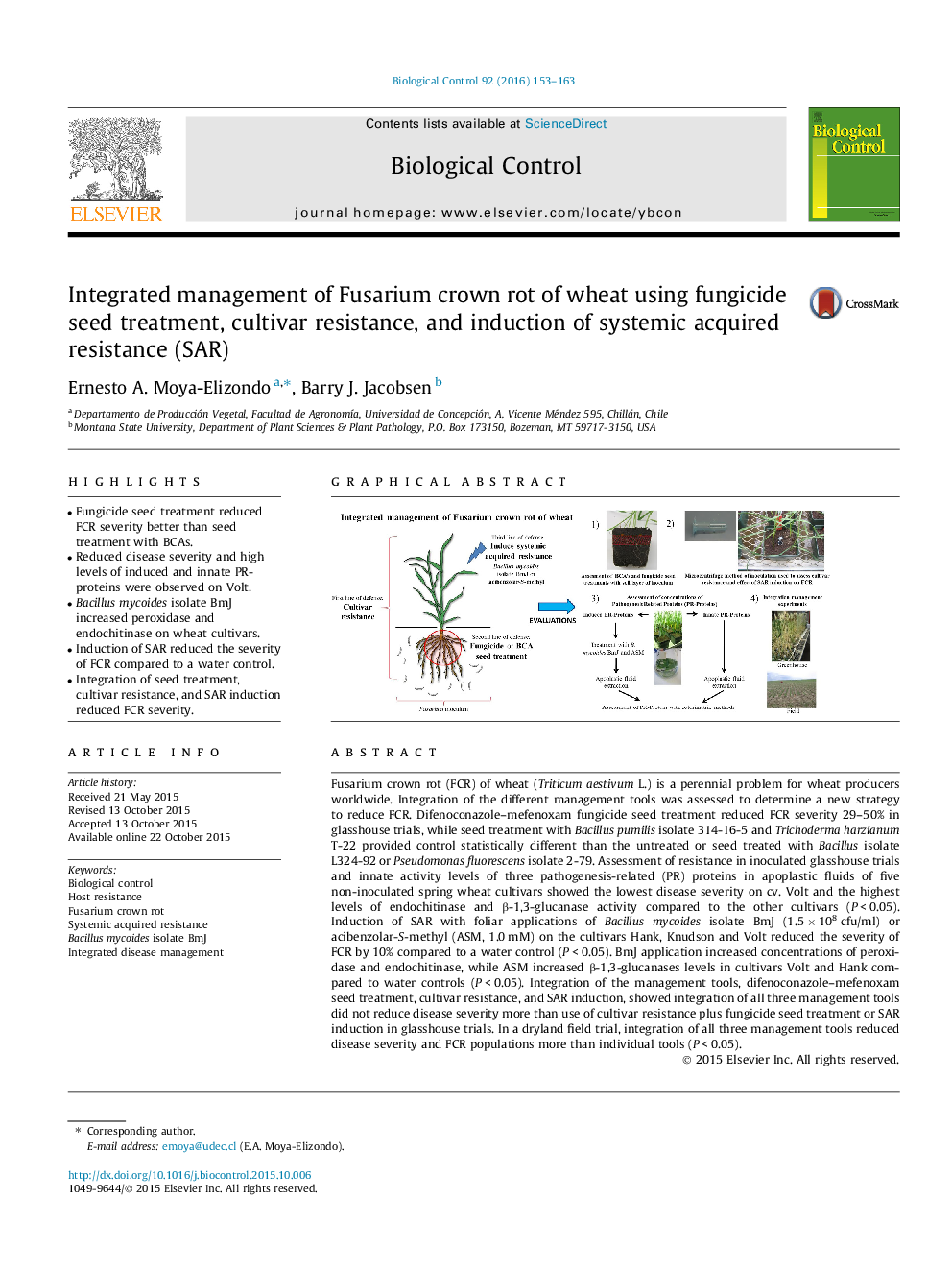| کد مقاله | کد نشریه | سال انتشار | مقاله انگلیسی | نسخه تمام متن |
|---|---|---|---|---|
| 4503717 | 1624242 | 2016 | 11 صفحه PDF | دانلود رایگان |

• Fungicide seed treatment reduced FCR severity better than seed treatment with BCAs.
• Reduced disease severity and high levels of induced and innate PR-proteins were observed on Volt.
• Bacillus mycoides isolate BmJ increased peroxidase and endochitinase on wheat cultivars.
• Induction of SAR reduced the severity of FCR compared to a water control.
• Integration of seed treatment, cultivar resistance, and SAR induction reduced FCR severity.
Fusarium crown rot (FCR) of wheat (Triticum aestivum L.) is a perennial problem for wheat producers worldwide. Integration of the different management tools was assessed to determine a new strategy to reduce FCR. Difenoconazole–mefenoxam fungicide seed treatment reduced FCR severity 29–50% in glasshouse trials, while seed treatment with Bacillus pumilis isolate 314-16-5 and Trichoderma harzianum T-22 provided control statistically different than the untreated or seed treated with Bacillus isolate L324-92 or Pseudomonas fluorescens isolate 2-79. Assessment of resistance in inoculated glasshouse trials and innate activity levels of three pathogenesis-related (PR) proteins in apoplastic fluids of five non-inoculated spring wheat cultivars showed the lowest disease severity on cv. Volt and the highest levels of endochitinase and β-1,3-glucanase activity compared to the other cultivars (P < 0.05). Induction of SAR with foliar applications of Bacillus mycoides isolate BmJ (1.5 × 108 cfu/ml) or acibenzolar-S-methyl (ASM, 1.0 mM) on the cultivars Hank, Knudson and Volt reduced the severity of FCR by 10% compared to a water control (P < 0.05). BmJ application increased concentrations of peroxidase and endochitinase, while ASM increased β-1,3-glucanases levels in cultivars Volt and Hank compared to water controls (P < 0.05). Integration of the management tools, difenoconazole–mefenoxam seed treatment, cultivar resistance, and SAR induction, showed integration of all three management tools did not reduce disease severity more than use of cultivar resistance plus fungicide seed treatment or SAR induction in glasshouse trials. In a dryland field trial, integration of all three management tools reduced disease severity and FCR populations more than individual tools (P < 0.05).
Figure optionsDownload as PowerPoint slide
Journal: Biological Control - Volume 92, January 2016, Pages 153–163